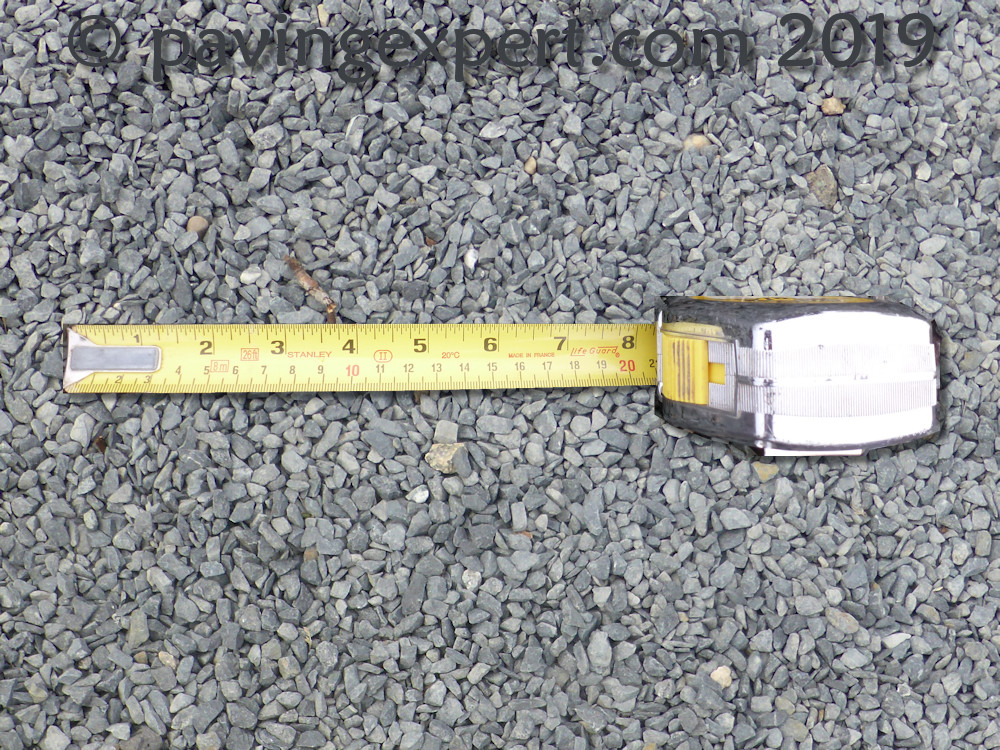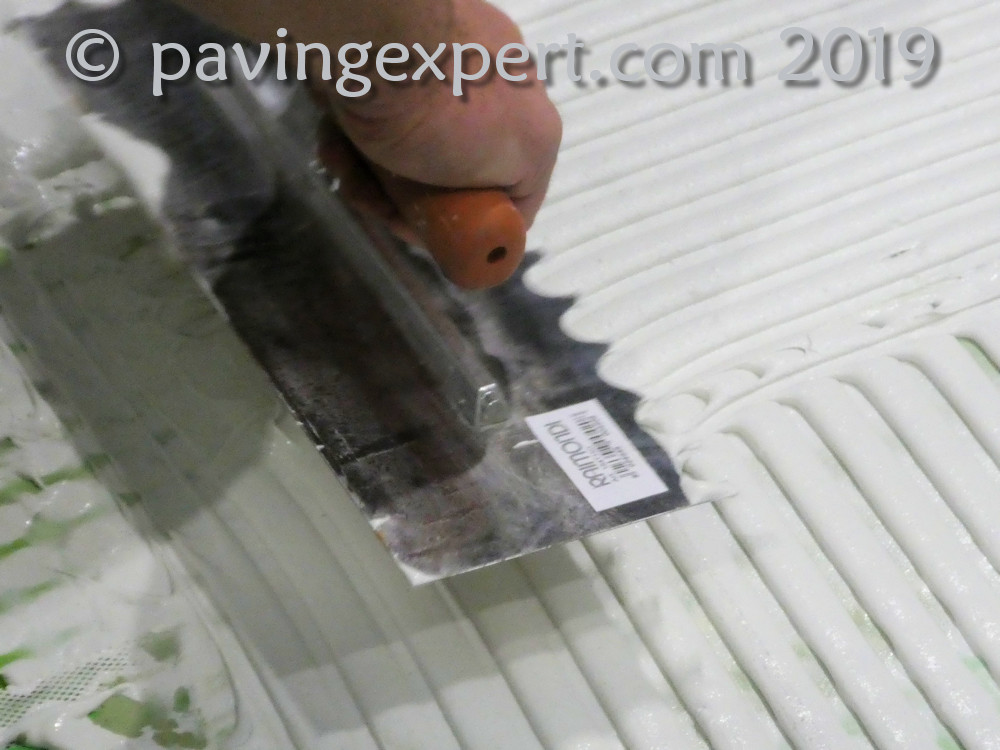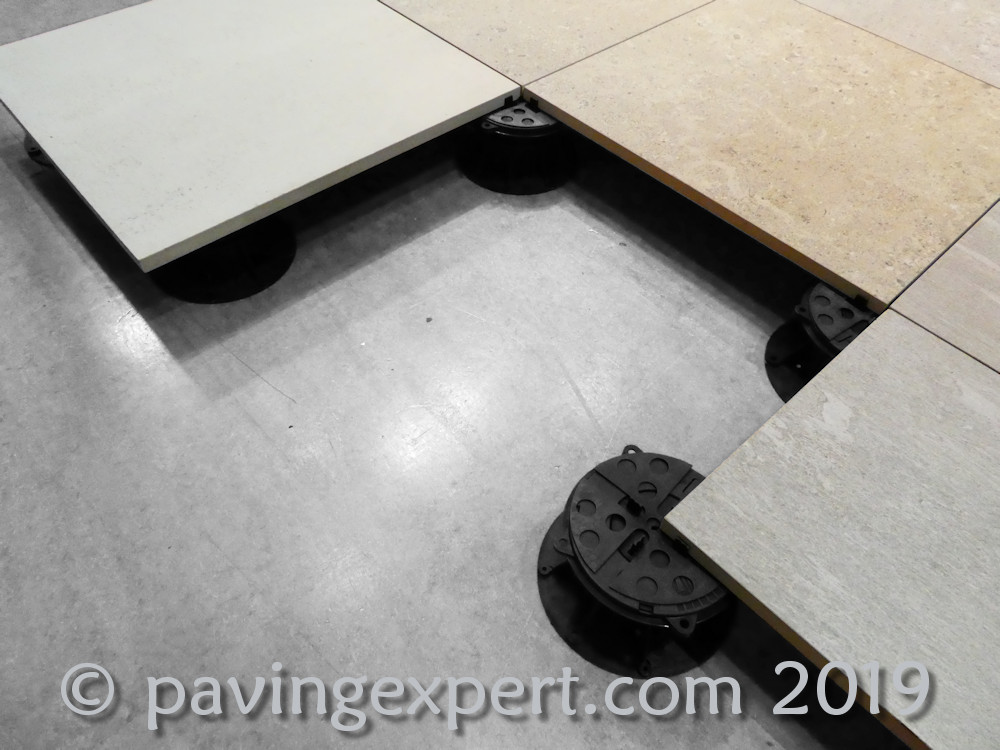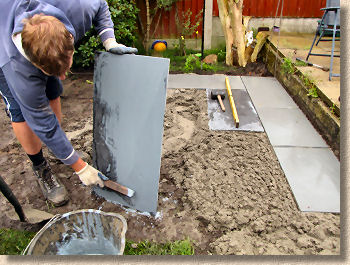Using gravel:
When they say ‘gravel’ they usually mean a fairly small-sized coarse aggregate, verging on being a grit, so something in the 4-6mm range, clean (no fines) and angular, so that it generates its own interlock. They would also be willing to accept a coarse sand, such as that we use for bedding block paving, or even laying over gravel/sand filled cell pavers.

In Europe, there is more of a tolerance for porcelain paving to be slightly erratic when laid outdoors. If it shifts a centimetre or so, what harm is done?
However, In Britain and Ireland, we expect paving, whether it’s porcelain, ceramic, vitrified, concrete, stone or anything else to STAY PUT. It’s not supposed to move, let alone wander about. Once laid, it should not move. And so, despite all the advice to the contrary, many installers are laying onto a bed of traditional mortar over a sub-base.
Meanwhile, on the other side of the channel, our European cousins are aghast with horror, gagging on their gnocchi and choking on their churros. Various continental equivalents of WTF are expressed, and they expect me to be able to explain why, on this side of the Channel, we insist on doing things wrongly.
Lay as tiling:
As mentioned above, the market in Britain and Ireland will not accept laying onto gravel, but there are alternatives that we could use, and the best of these is to lay over a concrete slab .
Yes, this pushes up the installation cost, and slows down the installation time, but it makes for a much, much better job. The flags/slabs/tiles should be bedded onto a suitable, outdoor-grade tile adhesive which has been spread over the prepared slab. In essence, these porcelain pavings should be laid more or less exactly as would be the case laying tiles to the kitchen or bathroom floor.

The other alternative, which does get used occasionally over here, but usually on roof terraces and the like, is to lay on pedestals which, themselves, are sitting on….wait for it…a concrete slab!

The Essentials:
No matter how much I talk to installers, not matter how much I write, regardless of how much nudge pressure I apply to suppliers, porcelain in Britain and Ireland will continue to be laid on a mortar bed over a flexible/unbound sub-base. This being the case, then the very least we can do is make sure as many potential pitfalls are excluded as is possible.
So, the tile/flag/slab/paver absolutely MUST have a slurry primer or bond bridge applied to the underside to ensure proper adhesion to the bed. Remember that low water absorption definition of porcelain? That the reason why it is so difficult to get a good bond between tile and bed. the slurry primer acts as an intermediary, sticking to both the underside of the tile and to the bedding mortar. Without is, the tiles *will* come loose, eventually.

And no. PVA is not ‘just as good’, no matter who told you. PVA is water soluble, and so, when in contract with the near-permanent damp of British and Irish gardens and driveways, it dissolves and disappears. Waste of time and money.
The sand used to make the bedding mortar should be washed, to rid it of harmful salts and clays which could cause staining and/or discolouration by contamination of the surface. A pale coloured, or silver, sharp/coarse sand is best.
Also, do NOT use a white cement, either for the bedding mortar or the jointing. Nasty things can happen when the white cement encounters certain porcelains and ceramics.
